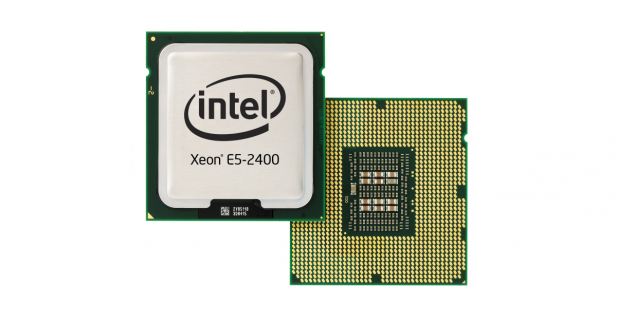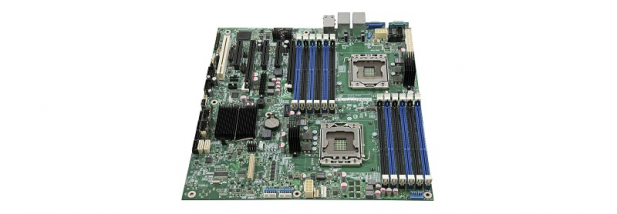 Yesterday Intel announced the Xeon E5-2400 v2 family of server processors. These chips are drop in compatible replacements for existing servers using Xeon E5-2400 (san v2) chips. There are twelve new models in the E5-2400 v2 family built on Intel’s 22nm process with rated TDPs as low as 50 watts and core counts as high as ten. Intel had few specifics in its announcement but did admit that these chips were previously referred to as Ivy Bridge-EN.
Yesterday Intel announced the Xeon E5-2400 v2 family of server processors. These chips are drop in compatible replacements for existing servers using Xeon E5-2400 (san v2) chips. There are twelve new models in the E5-2400 v2 family built on Intel’s 22nm process with rated TDPs as low as 50 watts and core counts as high as ten. Intel had few specifics in its announcement but did admit that these chips were previously referred to as Ivy Bridge-EN.
The Xeon E5 product line is aimed at one and two socket servers. To that end Intel is hoping that these new chips will end up in communications and storage applications. Intel is touting TDP constrained server designs like you might find in the embedded market as a perfect application for these now low voltage models. Green “V2” stickers will allow prospective server buyers to tell if the server they’re looking at has been updated with a Xeon E5-2400 compatible BIOS.
As far as new hardware features go Intel lists Asynchronous DRAM refresh and x16 Non-transparent bridging as key check box features that are necessary in storage applications. On a generation to generation basis Intel says that these v2 chips are up to 23 percent faster than the current chips. That’s a pretty large leap considering the paltry ten percent generation over generation increases we keep seeing on the desktop.
Intel is also talking up its hardware based entropy capability as a must have security feature. Dubbed Intel Secure Key this tech is present in the Xeon E5-2400 v2 family. Enhanced virtualization performance through the use of APICv technology is also a major enhancement on these new chips.
In light of Intel’s continuing dominance of the mainstream server market this announcement is small event. But prospective customers looking for low power one and two socket solutions will no doubt be pleased that Intel has updated its offerings. There’s not really one big bang in the E5-2400 v2 series that will draw in customers, rather it’s the combination of many small improvements and additional features that will continue to make these chips a good, if not the only choice, for enterprise grade embedded communications and storage applications.S|A
Thomas Ryan
Latest posts by Thomas Ryan (see all)
- Intel’s Core i7-8700K: A Review - Oct 5, 2017
- Raijintek’s Thetis Window: A Case Review - Sep 28, 2017
- Intel’s Core i9-7980XE: A Review - Sep 25, 2017
- AMD’s Ryzen Pro and Ryzen Threadripper 1900X Come to Market - Aug 31, 2017
- Intel’s Core i9-7900X: A Review - Aug 24, 2017

